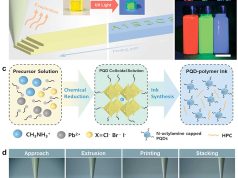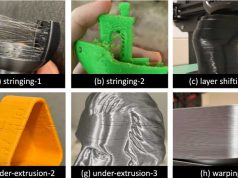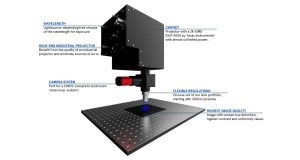Meat alternatives are common on supermarket refrigerated shelves, but plant-based seafood is rare. In the face of polluting fisheries, researchers are demonstrating a new approach: using 3D printing and an ink made from microalgae and mung bean protein, they are creating vegan calamari rings.
“I think it’s imminent that the seafood supply could be very limited in the future,” adds Poornima Vijayan, a graduate student who is presenting the work at the meeting. “We need to be prepared from an alternative protein point of view, especially here in Singapore, where over 90% of the fish is imported.”
At the heart of this new method is an “ink” mix of microalgae protein and mung bean protein processed with a food-grade 3D printer. The process makes it possible to create different textures in one product, ranging from smooth and oily to fibrous and chewy.
“Plant-based seafood mimics are out there, but the ingredients don’t usually include protein. We wanted to make protein-based products that are nutritionally equivalent to or better than real seafood and address food sustainability,” says Dejian Huang, Ph.D., the principal investigator of this research.
3D printing not only gives the product structure and texture, but also opens up a wide range of preparation options – from baking to frying. In initial tests, the product was sampled by researchers and found to be acceptable in terms of taste and promising in terms of texture.
“We printed salmon filets with protein from red lentils because of the protein’s color, and we’ve printed shrimp,” says Huang. “Now, we wanted to print something else interesting with the potential for commercialization — calamari rings.”
“The goal is to get the same texture and elastic properties as the calamari rings that are commercially available,” she says. “I’m still seeing how the composition impacts the product’s elasticity and the final sensory properties.”
“I don’t think that there are many known cases of allergies to microalgae proteins or mung bean proteins. But we don’t know yet because it’s still a new combination,” he says.
In the near future, the team plans to develop numerous prototypes and see how easily they can be developed for large-scale food production. Huang expects that these calamari-like products could be available in gourmet restaurants or specialty stores in the next few years.
“I think people will like our plant-based mimic. From a novelty perspective, it has that seafood taste but comes from only sustainable plant-based sources,” concludes Vijayan.
In summary, the use of 3D printing technology in the food industry opens up exciting possibilities, especially for sustainable and healthy food alternatives. It remains to be seen how the market will respond to these innovations.
Subscribe to our Newsletter
3DPresso is a weekly newsletter that links to the most exciting global stories from the 3D printing and additive manufacturing industry.




























